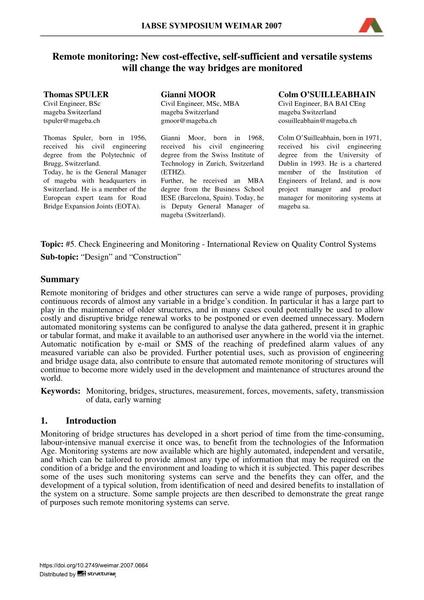Remote monitoring: A new cost-effective, self-sufficient and versatile system will change the way bridges are monitored

|
|
|||||||||||
Détails bibliographiques
| Auteur(s): |
Thomas Spuler
Gianni Moor Colm O'Suilleabhain |
||||
|---|---|---|---|---|---|
| Médium: | papier de conférence | ||||
| Langue(s): | anglais | ||||
| Conférence: | IABSE Symposium: Improving Infrastructure Worldwide, Weimar, Germany, 19-21 September 2007 | ||||
| Publié dans: | IABSE Symposium Weimar 2007 | ||||
|
|||||
| Page(s): | 562-563 | ||||
| Nombre total de pages (du PDF): | 8 | ||||
| Année: | 2007 | ||||
| DOI: | 10.2749/weimar.2007.0664 | ||||
| Abstrait: |
Remote monitoring of bridges and other structures can serve a wide range of purposes, providing continuous records of almost any variable in a bridge’s condition. In particular it has a large part to play in the maintenance of older structures, and in many cases could potentially be used to allow costly and disruptive bridge renewal works to be postponed or even deemed unnecessary. Modern automated monitoring systems can be configured to analyse the data gathered, present it in graphic or tabular format, and make it available to an authorised user anywhere in the world via the internet. Automatic notification by e-mail or SMS of the reaching of predefined alarm values of any measured variable can also be provided. Further potential uses, such as provision of engineering and bridge usage data, also contribute to ensure that automated remote monitoring of structures will continue to become more widely used in the development and maintenance of structures around the world. |
||||
| Mots-clé: |
ponts structures
|
||||
